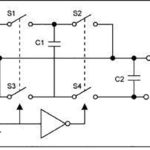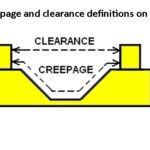As the use of LEDs for area lighting has grown dramatically, with both the use of LED-based replacement bulbs as well as LED-based fixtures for new construction (called luminaires in the trade), the issue of dimming these LEDs becomes more critical. LEDs require a very different technique for dimming than the conventional legacy incandescent bulb. […]
FAQ
How to power and configure LEDs
LEDs – light-emitting diodes – have largely supplanted other sources of light in many applications. They are used in applications ranging from small on/off power indicators, to small and large alphanumeric displays, to screen backlighting, and even for area and street illumination. It’s well known that LEDs are far more efficient than venerable incandescent lighting, […]
What is a charge pump and why is it useful? part 2
(Part 1 looked at the basic function and operation of the charge-pump switched-capacitor voltage doubler. This versatile topology has some additional interesting considerations and permutations.) Q: What about the capacitor? A: When MOSFET switches are used, the capacitor is sometimes called a “flying capacitor.” This designation is a holdover from the early days of electronics […]
Top power electronics threads on EDAboard.com – March
(editor’s note: Intrigued by these power electronics problems? Have a question or another solution? Then click the “Read more” link and follow the conversation on EDAboard.com or log in to EDAboard and participate in the power electronics forum thread.) Relationship between Q factor and the coupling factor of two wireless coils – I am testing […]
What is a charge pump and why is it useful? part 1
Converting an available DC source to a lower or higher voltage is a very common challenge in circuits. One option for the high-to-low conversion is to use a low-dropout regulator (LDO), but how can an LDO easily transform a lower voltage into a higher one? The answer for AC voltages is well-known: use a transformer, […]
What’s the difference between current sourcing and sinking?
Current can flow in two different ways with respect to the load. Sensors often provide real-world, analog input for embedded applications. MCUs rely on sensors to be their electronic “senses” and actuators to physically interact with world. Interfacing with external devices requires some planning on the part of the designer to ensure efficient operation. One […]
What is the difference between energy harvesting and energy scavenging?
During the first decade of this century, advances in several disparate technologies set the stage for a substantial rise in autonomous and semi-autonomous remote intelligent-node deployments that continues to this day. This trend arose in applications as different as hydrological surveying, transportation tracking and management, and machine health. It also has kicked off a flurry […]
What are amplifier classes and their relation to power efficiency (Part 2)?
In Part 1, we looked at Class A, B, AB, C, and D amplifiers. These designations are standardized, fully defined, and widely recognized. Now we’ll look at a few other topologies which are less well known but also used. The Class G amplifier is similar to the Class AB amplifier except that is uses two […]
What are amplifier classes and their relation to power efficiency (Part 1)?
Despite the contention that “everything is going digital,” amplifiers of analog signals have always been and continue to be important and unavoidable functions in real circuits and systems. Yet amplifiers which must produce significant output power from audio to RF face challenges of performance and efficiency. The industry has some long-established designations for classes of […]
Flashovers and clearance in electronic equipment
Electronic circuits accomplish so much with single-digit supply voltages that it’s easy to lose track of the precautions that higher-voltage circuits demand. But getting to those single-digit supplies often requires power-train sections operating at hazardous potentials. Although human safety is a key concern, it isn’t the only one. If sufficient clearances aren’t maintained between conductive […]











